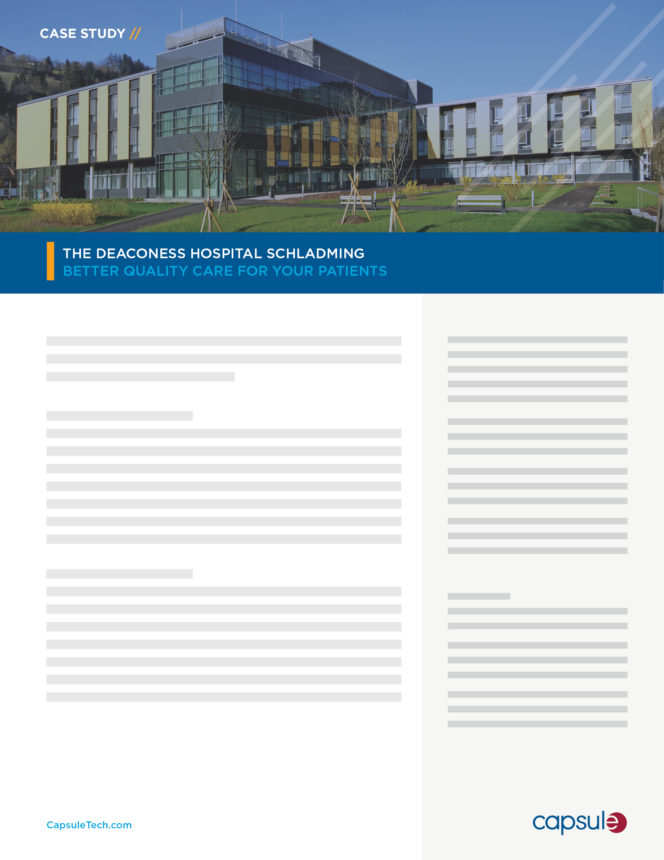According to a survey of newly licensed registered nurses, nearly one in five nurses leaves their first job within a year.1 Certainly a jarring statistic, nurse retention is a worry throughout healthcare organizations today. The strategies that healthcare providers have previously used to retain nurses — prior to the digital revolution 15 years ago — are no longer strong enough to offset the challenges healthcare currently faces in terms of improving nurse retention and driving value-based care.
RELATED READING: How Clinicians Adopt Technology
The Experience Gap
New nurses, by definition, do not have the same experience level as more mature nurses who have been working with doctors and patients for years. Part of the challenge to solving the nursing shortage is finding qualified and experienced nursing faculty — a difficult feat considering nursing programs produce over 165,000 graduates each year.2 According to American Health Care Association Staffing, the median nurse turnover rate is 43.9%.3 Nurses who enter the workforce with little to no clinical training have fallen into the experience gap. They may have acquired a lot of knowledge in school, but have little experience putting that knowledge into practice managing patients, which could lead to mistakes, safety issues and job dissatisfaction.
Alarm Fatigue
In addition to the experience gap, alarm fatigue is one of the most worrisome issues in nursing. The American Association of Critical Care Nurses defines alarm fatigue as a sensory overload that occurs when clinicians are exposed to an excessive number of alarms, which can result in desensitization to alarm sounds and an increased rate of missed alarms. According to the Joint Commission, alarm fatigue was the single most common factor contributing to 98 alarm-related events between 2009 and 2012, with 80 of these reported events resulting in death.4
With up to 2.2 million data elements1 and 770 alarms generated, per ICU bed per day, it’s easy to see that monitoring these variables and alarms can take a toll.5 Compounding this problem is the fact that clinicians aren’t always getting the data they need at the bedside for making timely decisions.
Given these distressing statistics, it is especially important for hospitals to simplify their alarms and streamline their data systems. Providers require more relevant and timely clinical insights through aggregation and visualization of all device data across departments.
Here are three tactics hospitals can use to shorten the experience gap, reduce alarm fatigue, and improve nurse retention to increase value-based care:
1. Better Align Resources
Specialty areas within nursing can often overwhelm new graduates, such as the intensive care unit and emergency department. Orientation for new nurses in these high-stress fields must include added time to shadow more advanced practitioners. New procedures, technology and protocols also change rapidly in nursing and can be extremely challenging to new and seasoned nurses, so resources to better manage stress and burnout are much needed.
It is a hospital’s responsibility to ensure the nursing staff is receiving quality training on how to operate tools, navigate clinical alarms and perform tests with new and updated equipment.
2. Establish a Nurse Residency Program
As previously mentioned, the nursing expertise gap is a key factor contributing to turnover. A survey conducted at Memorial Hermann Health System in southeast Texas found that first year turnover for nurses fell from 25% to 14% when structured onboarding was used in lieu of traditional broad training methods6.
The American Association of Colleges of Nursing defined standards for residency program accreditation in 2008. These guidelines ensure consistency of quality, content, and structure of new grad programs.7 Nursing residents are introduced to professional practice through discussions of evidence-based practice, critical thinking development, and nursing research. With quality teaching methods and real-world examples, the program should increase retention and provide essential tools to provide new nurses with success in the field.
3. Utilize Secure Platform Vendors
Organizations require a streamlined approach to managing clinical alarms. This results in less frequent but more actionable patient notifications. One study found that 31.9% of nurses said they ignore alerts due to the high frequency of false positives.8
New and enhanced devices at the patient’s bedside means additional clinical alarms. Channeling device alarms through enterprise architecture can help nurses manage their alerts, streamline workflows and respond to patient needs more efficiently.
A clinical communication platform can leverage the clinical surveillance capabilities of EHRs to automatically deliver best practice alerts with relevant clinical context. By highlighting clinical workflows, providers will remain in-the-know in terms of team-wide understanding, commitment to improvement, and the creation of best practices.
Ultimately, secure platform vendors can potentially improve nurse retention and reduce the overall amount of stress felt when treating patients.
RELATED READING: Why Medical Device Integration is Essential to Proactive Patient Safety
Streamlining Device Management and Increasing Overall Nurse Satisfaction
In order to enable automated real-time vital sign capture and to make this complex, time consuming task easier for the nursing staff, patient data must be streamlined. Data connectivity allows nurses to carry out quality medical care and spend more one-to-one time communicating with patients, rather than spend that time charting and organizing patient information.
The Deaconess Hospital in Schladming, Austria is an example of a top-tier healthcare organization that worked to eliminate siloed data systems to promote connectivity across its 126 beds. By utilizing the Capsule Medical Device Information Platform (MDIP), Deaconess was able to automatically capture patients’ data and provide more precise diagnoses — guaranteeing better treatment. Nurses were able to quickly get up-to-speed on the inner-workings of this new technology. Compared to the previous solution, Capsule’s technology enables the nurses to quickly identify whether all medical devices are working properly.
For more information on how the Deaconess Hospital utilized Capsule technologies to better streamline data management and improve the overall satisfaction of their nursing staff, check out the case study.
The Deaconess Hospital Schladming Case Study. Better Quality Care for Patients
Download